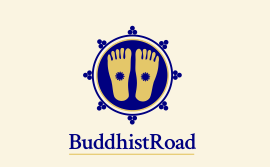Organised Conferences
12–14 July 2021: BuddhistRoad Final Conference, held online and hosted by CERES/RUB
ESTABLISHING OF BUDDHIST NODES IN EASTERN CENTRAL ASIA 6TH TO 14TH C.
Part III: Impacts of Non-Buddhist Influences and Doctrines
This is the 3rd and final conference of the BuddhistRoad project, which has been creating a new framework to understand the dynamics of cultural encounter and religious transfer across premodern Eastern Central Asia. This conference shares these aims, with first a new focus on the complex interactions between Buddhism and non-Buddhist traditions, and second a deepening of the traditional focus on Buddhist doctrines. Between the 6th and 14th centuries, as Buddhism continued to spread along the so-called Silk Road and strengthen its position in many of the nodes along the way, it encountered other religions, from both east and west, indigenous traditions of interacting with superhuman beings, and novel non-religious technologies. Buddhist travellers, missionaries and converts had to negotiate, accept, adapt, or reject these influences, and they all had impacts on local forms of Buddhism to a lesser or greater extent. A key part of the new Buddhist traditions created by these processes were altered worldviews, beliefs and creeds that were authorised by means of teaching and the passing down of orthodoxy. Thus, although doctrines and the impact of non-Buddhist influences are discussed on separate days of this conference, there is much scope for dynamic overlapping of topics and exciting cross-fertilisation of dialogue throughout the event.
Programme of the final conference
Report of the final conference
16–18 September 2019: BuddhistRoad Mid-project Conference, held at Beckmanns Hof, Ruhr Universität Bochum, Germany
ESTABLISHING OF BUDDHIST NODES IN EASTERN CENTRAL ASIA 6TH TO 14TH C.
Part II: Practice and Rituals, Visual and Material Transfer
The 2nd conference of the BuddhistRoad project ably succeeded in realising its twin aims: to investigate different aspects of material culture and transfer in and between the Central Asian Buddhist communities during the 6–14th centuries, and to tackle issues relating to ritual and religious practices there. Elements of material transfer discussed at the conference included the exchange of iconographical models and religious imagery, book culture, cave sanctuaries, and so forth. The section on ritual practices focused on the transmission, formulation and reformulation of salient forms of ritual performances, including meditation and visualisation. There was an admirably amount of over-lapping between material culture and ritual practices at the conference, mirroring that which took place in Central Asian Buddhism during our time period.
Programme of the mid-project conference
Report of the mid-project conference
23–25 May 2018: BuddhistRoad Start-up Conference, held at Beckmanns Hof, Ruhr Universität Bochum, Germany
ESTABLISHING OF BUDDHIST NODES IN EASTERN CENTRAL ASIA 6TH TO 14TH C.
Part I: Sacred Space, Pilgrimage, Patronage, Legitimation Strategies
The aim of the start-up conference was to investigate the complexities concerning patronage and donors in Central Asian Buddhist communities on the one hand, and issues relating to sacred spaces and pilgrimage on the other. While the focus was be on the cultures that thrived along the Silk Road during the period 6–14th centuries, the scope of the meeting also included these thematics in adjacent areas and cultures in order to provide viable comparative and theoretical basis for further elucidation and discussion.
Programme of the start-up conference
Report of the start-up conference


